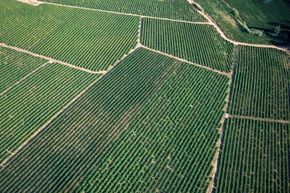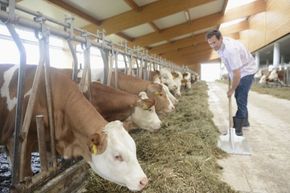In the 1930s one American farmer produced enough agricultural product to feed a total of four people; a family farm was literally meant to feed a family [source: Kirschenmann]. Fast forward 40 years, and that number rises from four people to 73. Fast forward through 80 years of agricultural and bioscience innovation, and in the 2010s, one farmer produces enough food to feed 155 people [sources: USDA, Sullivan].
To better understand what that number means and how it was calculated, let's first look at the current state of farming.
Advertisement
To be considered a farm, at least in the eyes of the U.S. Census, a modern farmer must produce and sell at least $1,000 worth of agricultural products annually. Under this presumption, there are 3.2 million farmers farming 2.2 million farms on roughly 915 million acres of land in the United States [sources: EPA - Ag Center, USDA]. Together these farms produce crops for the more than 313 million people living in the U.S. — but they aren't just feeding America; U.S. farmers ship their commodities worldwide, exporting more than 50 types of agricultural products.
But it's not as simple as it may sound. The number of people one farmer feeds is calculated by economists at the American Farm Bureau Federation, and it's not actually based on the production of an individual farmer; rather, it's a ratio that's based on the production of each farm. The math goes like this:
First, the farm bureau begins the calculation with a bit of accounting. They calculate the total sum of American farm agricultural product cash receipts (the amount of money a farm takes in on its sales and services) for a specific year — we'll call this number X. Then they subtract the trade balance (that's the difference between the value of the total exported goods and the value of the total imported goods, also known as net exports) for that same time period, which we'll call Y. The result of X minus Y is then divided back into X. The calculation is also designed to take into account the population of the U.S. during that time period, divided by the number of farms in the U.S. in the same year [source: Sullivan].
Advertisement



